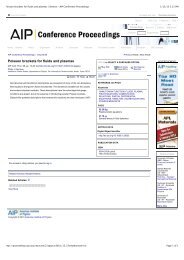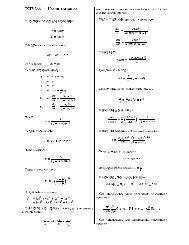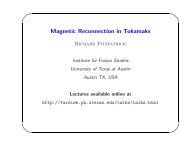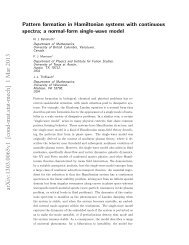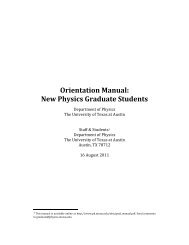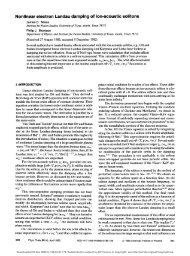Magnetic Fields and Magnetic Diagnostics for Tokamak Plasmas
Magnetic Fields and Magnetic Diagnostics for Tokamak Plasmas
Magnetic Fields and Magnetic Diagnostics for Tokamak Plasmas
Create successful ePaper yourself
Turn your PDF publications into a flip-book with our unique Google optimized e-Paper software.
<strong>Magnetic</strong> fields <strong>and</strong> tokamak plasmas<br />
Alan Wootton<br />
Figure 18.7. The internal electric field prior to a disruption (from Hutchinson)<br />
Figure 18.7 shows some spatial profiles of E φ from this analysis just be<strong>for</strong>e <strong>and</strong> at a disruption.<br />
Although the edge electric field goes negative (the negative voltage spike) the internal electric<br />
field strongly positive. In principle, having measured j <strong>and</strong> E we could derive the local<br />
conductivity.<br />
Mirnov Oscillations<br />
The same probes used to measure the internal equilibrium properties can be used to look at the<br />
Mirnov fluctuations (as long as the coils have a sufficiently high frequency response). Data from<br />
such experiments has isolated the radial dependence of the fluctuating b r , b θ fields, as shown in<br />
Figure 18.8. It agrees with our discussion in section 17, namely b ∝ (r mn /r) m+1 <strong>for</strong> r > rmn<br />
without a vacuum vessel. In the presence of a conducting vessel at r = r w we must account <strong>for</strong><br />
the image currents which flow, so <strong>for</strong> example we would expect<br />
138



